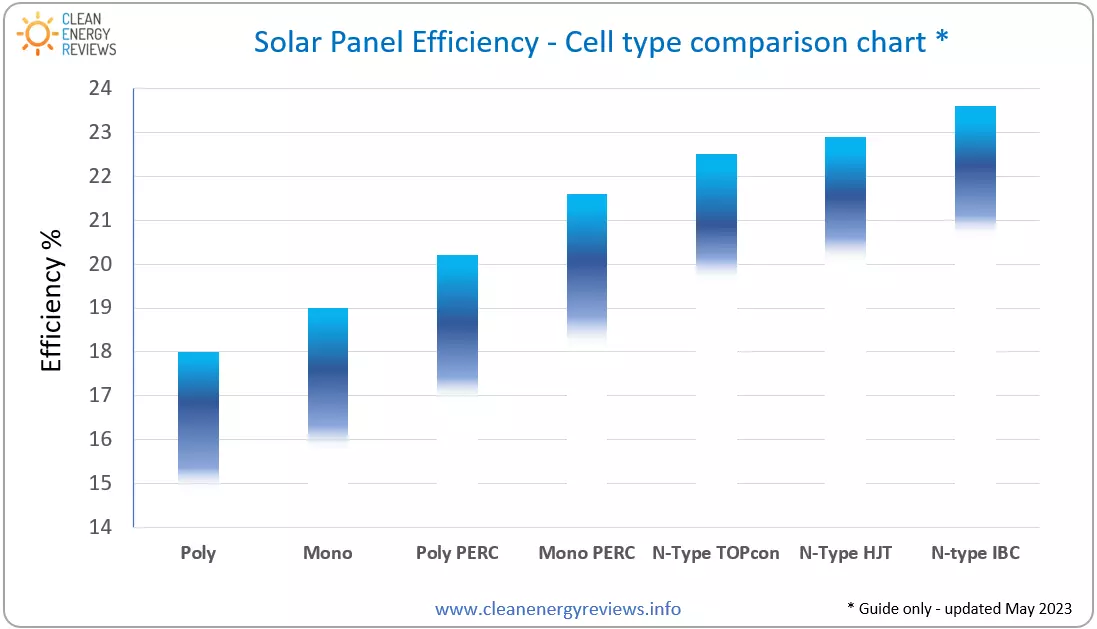
We know Energy Transformation Takes Place in a Solar Panel is light energy (photons) into electrical energy (electricity). We hope the efficiency is high. Research into the efficiency of solar panels is a very active and vital field. Improving the efficiency of solar panels is crucial for reducing the cost of renewable energy and increasing its widespread adoption. Here are some key aspects of solar panel efficiency research:
1. Definition and Metrics of Efficiency:
- Conversion Efficiency: This is the most common metric for solar panel efficiency, representing the percentage of solar energy that is converted into electrical energy. It is calculated as: (Output Electrical Power / Input Solar Power) x 100%.
- Open-Circuit Voltage (Voc): A solar panel’s maximum voltage when no current is flowing.
- Short-Circuit Current (Isc): The maximum current produced when the terminals of a solar panel are shorted.
- Fill Factor (FF): Describes the ratio between the ideal power output of a solar panel and its actual power output. The ideal value is 1, and actual values are less than 1.
- Complete Efficiency Calculation Formula: Efficiency = (Voc x Isc x FF) / (Incident Solar Power)
2. Factors Affecting Solar Panel Efficiency:
- Materials:
- Silicon: Crystalline silicon (monocrystalline and polycrystalline) is currently the most widely used material, but it has efficiency limitations.
- Thin-Films: Thin-film materials like amorphous silicon, cadmium telluride, and copper indium gallium selenide (CIGS) offer cost advantages, but their efficiency is usually lower.
- Perovskites: Perovskites are emerging materials with high-efficiency potential but still face stability issues.
- III-V Semiconductors: Such as gallium arsenide, offer higher efficiency but are more expensive and typically used in space applications.
- Cell Structure: The structural design of the cell (e.g., p-n junction, back contacts) affects efficiency.
- Light Absorption: Improving the ability of the solar panel to absorb light of different wavelengths.
- Light Reflection and Scattering: Reducing light reflection and scattering on the surface of the solar panel to allow more light to enter the semiconductor material.
- Temperature: Solar panel efficiency decreases as the temperature increases.
- Resistance: Internal resistance reduces efficiency; materials and structures need optimization to reduce resistance.
- Optical Losses: Surface defects, impurities, and imperfect electrical contacts cause optical losses, reducing efficiency.
3. Research Directions and Technologies:
- Development of New Materials: Research new materials to improve efficiency and reduce costs, such as perovskites, quantum dots, and nanomaterials.
- Multi-Junction Cells: Stacking solar cells with different band gaps to absorb a broader spectrum of light and achieve higher efficiency.
- Optical Improvements: For example, anti-reflection coatings, photonic crystals, and nanostructures can be used to enhance light absorption and reduce light loss.
- Passivation Techniques: Using passivation layers to reduce surface defects and impurities, improving efficiency.
- Back Contact: Moving the electrodes to the back of the cell to reduce front shading and resistance.
- Temperature Management: Using cooling systems and special coatings to lower the temperature of solar panels.
- Intelligent Design: Incorporating intelligent algorithms and control systems to improve the performance of solar panels under different environmental conditions.
4. Current Efficiency Levels:
- Commercial Silicon Solar Panels: Efficiencies typically range from 15% to 22%.
- High-Efficiency Laboratory Cells: Efficiencies of over 40%, such as with multi-junction solar cells, have been achieved.
- Perovskite Solar Cells: Laboratory efficiencies are rapidly improving, exceeding 25%, but commercialization still faces challenges.
Summary:
Research into the efficiency of solar panels is a continuous process of improvement. Researchers are constantly exploring new materials, structures, and technologies to enhance efficiency, reduce costs, and overcome the limitations of existing technologies. Improving the efficiency of solar panels is crucial for promoting renewable energy development and reducing dependence on fossil fuels. Future research will focus on increasing material efficiency, reducing manufacturing costs, improving stability, and addressing the challenges of large-scale production.
